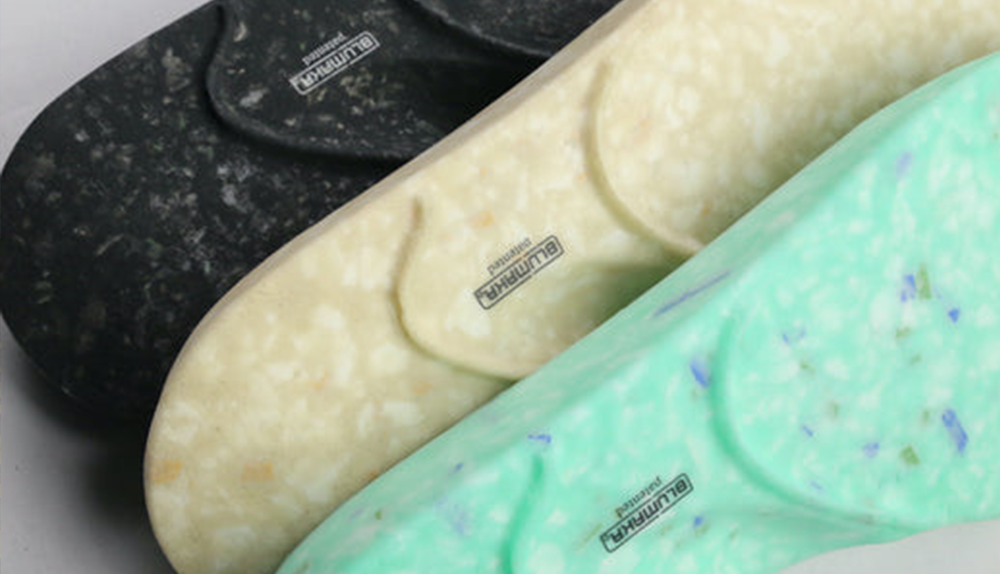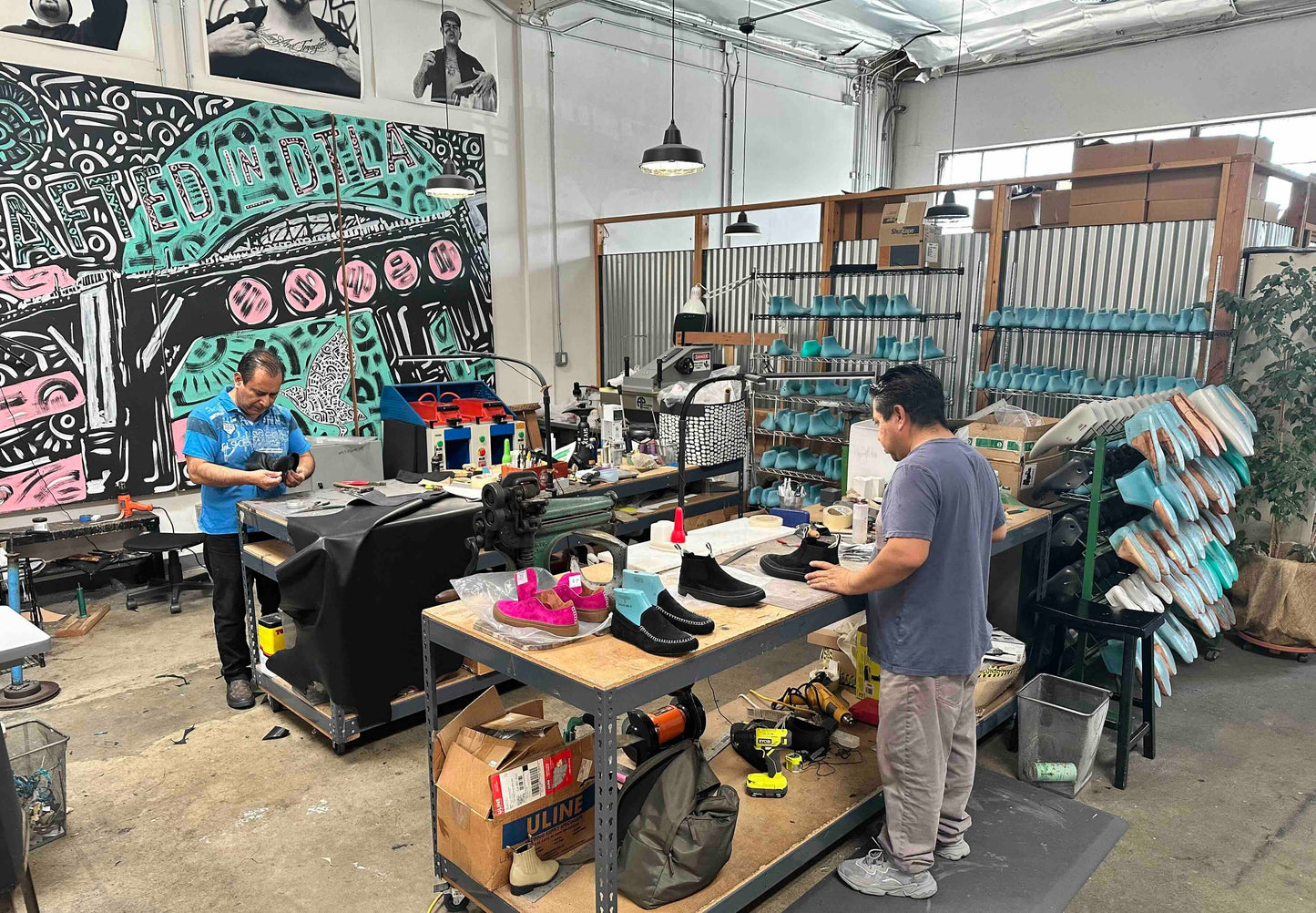
An Overview On
What Makes Shoes Ethical
Shoes have been an important part of our lives for a very long time, across all cultures and all nations. Today, with so many of us on the planet, the ever-growing footwear industry is making a significant impact on our environment.
This article will discuss unsustainable footwear, sustainable footwear, and what individuals can do to protect the environment.
Unsustainable footwear
The footwear industry is booming. Unfortunately, due to overseas mass production, it is to blame for 1.4% GHG emissions, which adds up to approximately seven hundred million metric tonnes of carbon emissions. Additionally, too many sectors of the footwear industry are known to unsustainably extract non-renewable raw materials. Consequently, their products are non-recyclable and harmful to the environment.
Today, most manufacturers don’t make shoes that last for a long time. They glue together various materials, including plastic, textiles, inferior leathers, and petroleum, making the shoes hard to recycle. Therefore, once the shoes outlive their use, they are dumped in landfills or incinerated.
Dyeing and treating textiles and shoe components releases harmful by-products to the environment and causes 20% of industrial water pollution. Greenpeace, an environmental organization, recently released an investigative report which revealed that some footwear factories in China producing shoes for well-known global brands release dangerous chemicals into the Pearl and Yangtze River deltas.

Sustainable footwear
Ethical footwear, often referred to in the past as eco-friendly shoes, claim to be cruelty-free. Manufacturers do not use any animal products like leather, wool, animal hair, silk, animal skin, or shearling during the manufacturing process. Additionally, they don’t use adhesives derived from animals. Instead, they use various natural & sustainable materials, including certified organic cotton, vegan leather, vegan suede, re-used rubber, and hemp. Most, if not all of them, are recyclable materials that claim to be sustainably sourced. The spirit of this movement on the surface would seem to be a sustainable option, but often times the trade off for some of these materials flies in the opposite direction.
The materials used to make sustainable shoes vary with different footwear brands. As a conscious consumer, it is wise to do your research to make an informed decision, that also takes into account the carbon footprint of transporting the finished goods and often times the materials. It is easy to get caught up in "green washing" by simply assuming that alternative materials and claims made by manufacturers are truly the best solution.
Materials used to make sustainable footwear
Typically, the most commonly claimed eco-friendly materials used to make ethical shoes are; cotton, polyurethane (PU), cork, and recycled/natural rubber.
Cotton
Many ethical footwear brands use cotton to make summer shoes because of their soft and airy nature. Shoes made from cotton are comfortable and breathable. Cotton is also a popular choice for ladies’ shoes, work shoes, and formal shoes.
Some dis-advantages with this material is that it is hard to waterproof and it takes a large amount of water to grow cotton, which is not sustainable.
Polyurethane (PU)
PU is a variety of synthetic leather that manufacturers make from high-quality polymers. PU comes in different colors, and it is mainly used for the bottoms and uppers of shoes.
There is an ongoing debate on whether PU is a sustainable raw material since several chemicals are used and is basically plastic. Therefore, it may be harmful to the environment since it does not decompose. Ethical manufacturers are always looking for ecologically responsible ways to manufacture PU, and the benefits can hopefully outweigh the disadvantages.
Cork
Cork has natural and organic properties. Therefore, it is a popular material choice for ethical footwear manufacturers. Cork has several advantages. It is breathable, fire-resistant, and lightweight. Additionally, it has anti-bacterial characteristics.
Manufacturers primarily use cork to make wedges and sandals. Most people love their natural look, but others find it somewhat "granola".
Recycled/Natural rubber
Natural rubber is a product of the rubber tree. Most manufacturers use this material to make soles for sustainable men’s and women's shoes. Shoes made with rubber are eco-friendly shoes and can easily be recycled. Additionally, they last for a long time and are 100% cruelty-free.

Is leather ethical?
Leather shoes and sandals have been a staple for centuries as it is a durable and comfortable material for a variety of uses. Leather is a bi-product of the animals who are raised for their meat. The controversy about leather mainly involves the way the leather is treated during the tanning process and the impact on the environment. When choosing an ethical leather, take into account a tanning process that is chrome free.
Because leather is by nature is bio-degradable, it is important to make sure the process to treat it for commercial use is a responsible one. Sometimes, hazardous chemicals, namely chrome, are used during the tanning process. The substances significantly negatively impact the environment, especially in areas close to the tanning factory so it it important to choose wisely. Leather tanning potentially affects water supply and the quality of air in areas close to the tanning facility.
Is vegan leather ethical?
Unlike leather, vegan leather is not made from animal skin. As discussed above, many manufacturers use polyurethane to make it but there are also different types plant-based vegan leathers. Its appearance and texture are similar to that of leather, but it is cruelty-free since no animals die in the process.
Therefore, some vegan leathers can be considered ethical, but it is important to research what process and materials are used in "vegan" materials as it is such a broad term used loosely.
Sneakers
Sneakers quickly gained popularity after Michael Jordan first wore them in 1984. When the demand for sneakers increased, various manufacturers started producing them. Sneakers, including high tops, are often made using a hazardous mixture of synthetic materials and plastic, manufactured where working conditions and wages are of little consideration. Seemingly low labor costs come at the expense of human rights and the environment when short cuts are taken.
Today, a few footwear brands attempt to make sustainable sneakers by replacing toxic materials with natural, recyclable ones. For example, COMUNITYmade is using a midsole, made by Blumaka, that contains 85% recycled foam content. Material that was left on the factory floor and bound for the landfill, can now be remade into a brand new midsole of a shoe.
Why are sustainable shoes expensive?
You may notice that sustainable footwear costs more than unsustainable shoes. There are several reasons why they cost more. For starters, the materials used in the manufacturing process are pretty pricey. Sustainable footwear brands also try to strictly adhere to ethical business practices, including environmental-friendly manufacturing and fair wages for their employees.
Despite this, you can find sustainable shoes that are within your budget. Alternatively, you can opt for second-hand vegan shoes sold by reputable vendors.
What we can do to protect the environment
Here are a few things you can do to protect the environment:
- When buying shoes, do your research. Find out where it is made, who is making it, and how they are making it.
- Buy high-quality and long-lasting shoes. Every time you go shopping, try to buy durable shoes. This way, they will last for a long time and won’t end up in a landfill in a few months.
- Buy second-hand shoes. By doing so, you reduce the impact of disposal.
- Instead of throwing out old shoes, donate them. You will help someone in need and, by extension, help the environment.
- Repair your shoes rather than throwing them away - choose well and make them last.



